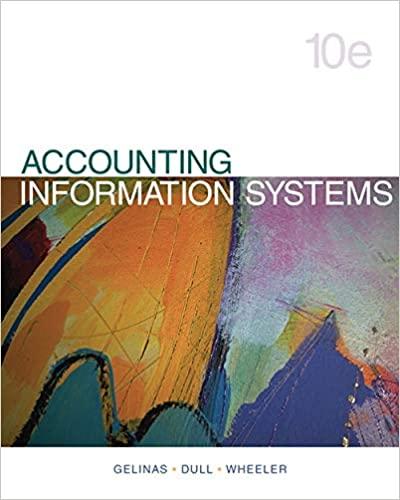Required information [The following information applies to the questions displayed below] The transactions listed below are typical of those involving New Books Incorporated and Readers' Corner. New Books is a wholesale merchandiser and Readers' Corner is a retail merchandiser. Assume all sales of merchandise from New Books to Readers' Corner are made with terms n/30, and the two companies use perpetual inventory systems. Assume the following transactions between the two companies occurred in the order listed during the year ended August 31. a. New Books sold merchandise to Readers' Corner at a selling price of $630,000. The merchandise had cost New Books $447,000. b. Two days later, Readers' Corner complained to New Books that some of the merchandise differed from what Readers' Corner had ordered. New Books agreed to give an allowance of $11,500 to Readers' Corner. Readers' Corner also returned some books, which had cost New Books $3,600 and had been sold to Readers' Corner for $5,100. No further returns are expected. c. Just three days later, Readers' Corner paid New Books, which settled all amounts owed. Required: 1. Indicate the amount and direction of the effect ( + for increase, - for decrease, and No effect) of each transaction on the Inventory balance of Readers' Corner. Required information [The following information applies to the questions displayed below] Ross \& Company is a wholesaler of hair supplies. Ross uses a perpetual inventory system. The following transactions (summarized) have been selected for analysis: a. Sold merehandise for cash (cost of merchandise $29,877 ). b. Received merchandise returned by customers as unsatisfactory (but in perfect conditiou; for cash refund (original cost of merchandise $250 ). c. Sold merchandise (costing $5,605 ) to a customer on account with terns n/60. d. Collected half of the balance owed by the customer in (c). e. Granted a partial allowance relating to credit sales the customer in (c) had not yet paid. f. Anticipate further returns of merchandise (costing $170 ) after year-end from sales made during the year. 53,120 280 11,800 5,900 166 290 4. Ross is considering a contract to sell merchandise to a hair salon chain for $21,000. This merchandise will cost Ross $13,900. What would be the increase (or decrease) to Ross gross profit and gross profit percentage? (Round "Gross Profit Percentage" to 1 decimal place.) Required information [The following information applies to the questions displayed below] Ross \& Company is a wholesaler of hair supplies. Ross uses a perpetual inventory system. The following transactions (summarized) have been selected for analysis: a. Sold merchandise for cash (cost of merchandise $29,877 ). b. Feceived merchandise returned by customers as unsatisfactory (but in perfect condition) for cash refund (original cost of merchandise $250 ). c. Sold merchandise (costing $5,605 ) to a custoner on account with terms n/60. d. Collected half of the balance owed by the customer in (c). e. Granted a partial allowance relating to eredit sales the custoner in (c) had not yet paid. f. Anticipate further returns of merchandise (costing $170) after year-end from sales made during the year. $53,120 280 11,800 5,900 166 290 Required: 1. Compute Net Sales and Gross Profit for Ross. During the month of June, Ace incorporated purchased goods from two suppliers. The sequence of events was as follows: June 3 Purchased goods for $4,000 from Dianond Incorporated with terms 3/12,n/45. June 5 Returned goods costing $950 to Diamond Incorporated for credit on account. June 6 purchased goods from club Corporation for $900 with terms 2.5/12,n/45. June 11 paid the balance owed to Diamond Incorporated. June 22 paid Club corporation in full. Required: Assume that Ace uses a perpetual inventory system and that the company had no inventory on hand at the beginning of the month Calculate the cost of inventory as of June 30. (Do not round intermediate calculations. Round your answer to 2 decimal places.) Required information [The following information applies to the questions displayed below] Ross \& Company is a wholesaler of hair supplies. Ross uses a perpetual inventory system. The following transactions (summarized) have been selected for analysis: a. Sold merchandise for cash (cost of merchandise $29,877 ). b. Received merchandise returned by customers as unsatisfactory (but in perfect condition) for cash refund (original cost of merchandise $250 ). o. Sold morchandise (costing $,605 ) to a customer on account with terms n/60. d. collected half of the balance owed by the customer in (c). e. Granted a partial allowance relating to oredit sales the customer in (c) had not yet paid. f. Antieipate further returns of merchandise (costing $170 ) after year-end from sales made during the year. $53,120 280 11,800 5,900 166 290 2. Compute the gross profit percentage. (Round your answer to 1 decimal place.) The following transactions were selected from among those completed by Bear's Retail Store: November 20 sold two Items of merchandise to Cheryl Jahn, who paid the $430 sales price 1 in cash. The goods cost Bear's $320. November 25 Sold 20 items of merchandise to Vasko Athletics at a selling price of $4,200 (total); terms 3/10, n/30. The goods cost Bear's $2,600. November 28 Sold 10 identical itens of merchandise to Nancy's Gym at a selling price of $6,200( total); terma 3/20, n/30. The goods cost Bear's $4,100. November 29 Nancy's Gym returned one of the items purchased on the 28 th. The 1tem was in perfect condition and oredit was given to the customer on account. No furtber returns are expected. Decenber 30 Vasko Athletics paid in full for the invoice of November 25. Required: Compute the Net Sales to be reported over the two months. (Do not round intermediate calculations. Round your answer to 2 decimal places.)












